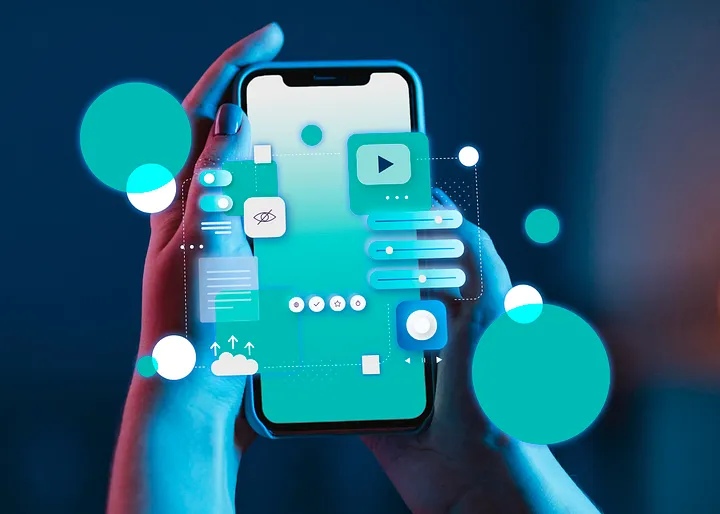
Turning your app idea into reality might seem like a daunting task, but breaking it down into manageable steps can make the process straightforward and achievable. Whether you’re a budding entrepreneur or just curious about how apps are made, this guide will walk you through the journey from concept to launching your app on the App Store. Let’s dive in!
1. Define Your Idea
The first step in developing a mobile app is to clearly define your idea. What problem does your app solve, and who is your target audience? Write down your thoughts, goals, and key features you want your app to have. This will help you stay focused and guide the development process.
Key Points:
- Identify the problem your app addresses.
- Understand your target audience.
- List essential features and functionalities.
2. Research and Plan
Before you start building, it’s crucial to research your market and competitors. Look at similar apps to see what works and what doesn’t. Planning involves creating a roadmap for your app, including timelines, budget, and resources needed. If you’re looking for expert assistance, consider partnering with the best mobile app development company in Mumbai for valuable insights and support.
Key Points:
- Analyze similar apps and market trends.
- Develop a clear strategy with timeframes and budgets.
- Decide on the platforms (iOS, Android, etc.) for your app.
3. Create Wireframes
Wireframes are basic visual guides that outline the structure of your app. They’re like blueprints for your app’s design and functionality. Wireframes help you visualize how users will interact with your app and make it easier to refine your ideas.
Key Points:
- Sketch the basic layout and features.
- Focus on user experience (UX) and flow.
- Use tools like Sketch or Figma for digital wireframes.
4. Design the UI
With wireframes in place, it’s time to design the User Interface (UI). This step involves creating the actual look and feel of your app, including colors, fonts, and images. The goal is to make your app visually appealing and easy to navigate. Collaborating with a top mobile app development company in Mumbai can help ensure your design is both engaging and functional.
Key Points:
- Develop a visually engaging design.
- Ensure consistency in design elements.
- Create high-fidelity mockups to represent the final design.
5. Develop the App
Now comes the exciting part – building the app! This involves writing the code that makes your app function. There are two main parts to development: front-end (what users see) and back-end (the server-side logic). Depending on your skill set, you might need to hire developers or use app development platforms. For a seamless development process, consider working with the android app development company Mumbai
Key Points:
- Choose between native (iOS/Android) or cross-platform development.
- Focus on both front-end and back-end development.
- Use development tools and frameworks suited to your needs.
6. Test Your App
Testing is crucial to ensure your app works smoothly and is free of bugs Conduct extensive testing on different devices and operating systems. This includes functionality testing, usability testing, and performance testing. Gather feedback from real users to make improvements.
Key Points:
- Test on various devices and screen sizes.
- Identify and fix bugs and issues.
- Collect user reviews to improve the app.
7. Launch Your App
With testing complete, you’re ready to launch your app on the App Store or Google Play. Prepare for the launch by creating a compelling app store listing with a catchy description, engaging screenshots, and an informative video if possible.
Key Points:
- Prepare an app store listing with relevant details.
- Optimize your app’s description and visuals for visibility.
- Monitor the launch and address any immediate issues.
8. Market and Promote
After launching, it’s time to promote your app. Use social media, online ads, and other marketing strategies to attract users. Continuously engage with your audience and gather feedback to keep improving your app.
Key Points:
- Implement marketing strategies to reach your target audience.
- Use social media, content marketing, and paid media advertising.
- Continuously update your app depending on user feedback.
9. Maintain and Update
The launch isn’t the end of the journey. To keep your app relevant and functional, you need to provide ongoing maintenance and updates. Fix bugs, add new features, and adapt to changes in technology or user expectations.
Key Points:
- Regularly update the app to fix bugs and add features.
- Stay informed about updates in technology and user preferences.
- Maintain a good relationship with users through updates and support.
And there you have it – a step-by-step guide to taking your mobile app idea from concept to the App Store. By following these steps and possibly partnering with the top mobile app development company in Mumbai, you’ll be well on your way to creating a successful app that users will love. Ready to turn your idea into an app? Let’s get started!

